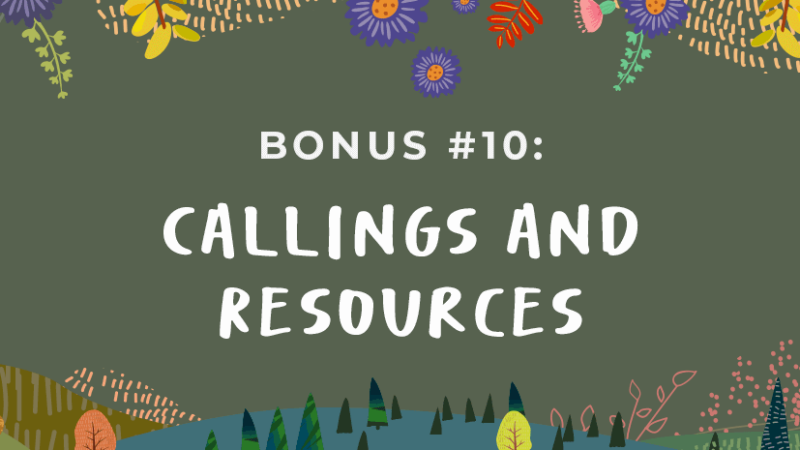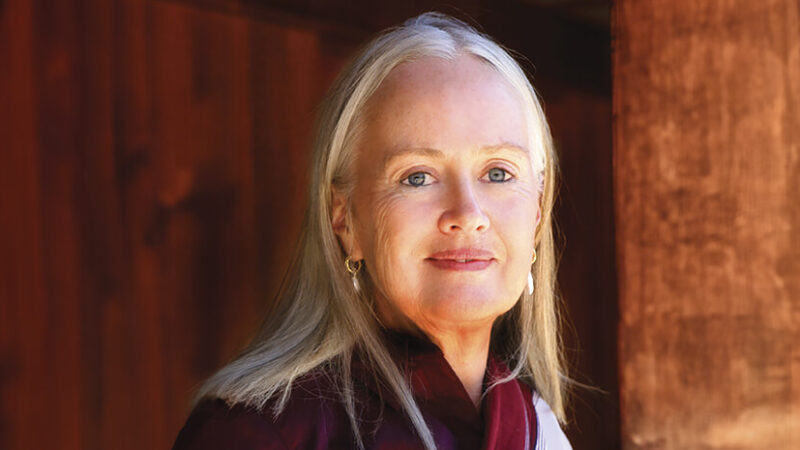What Is Ahimsa? Yoga Meets Plant-Based Living (+ recip...

The time is always right to do what is right.
MARTIN LUTHER KING JR.
What is Ahimsa?
Patanjali’s Eight Limbs of Yoga consist of two main components: yamas (things we must abstain from in order to lead a spiritual and ethical yogic life) and niyamas (spiritual observances). The very first of the yamas is ahimsa, or non-harm. This principle lies at the very heart of yoga and should be applied to everything—how we treat ourselves, how we treat others, and how we treat the world around us.
Of course, it’s logistically impossible to make it through life without causing any harm whatsoever. We live in a world in which we cannot escape creating some kind of pain. This world has been set up as being “perfectly imperfect.” If we walk across a park, we will step on ants. If we wipe sweat off our forehead, we will kill millions of bacteria. So how do we create the least amount of harm while we are here on this earth? If we cannot escape killing and harming completely, then how do we minimize our footprint?
Practicing Ahimsa through food
With this in mind, we do the best we can. The truth of the matter is that, even without consciously abiding by the Eight Limbs of Yoga, most of us innately attempt to live our lives in a way that doesn’t inflict harm on others. However, one way in which even the most gentle and aware among us do cause harm is by eating in an unconscious manner. We don’t stop to consider where our food is coming from or how it is making its way to our plate. For most of us, eating offers a prime avenue for becoming more aware of the earth and living beings around us and of alleviating some of the harm we are causing, often without even really being conscious of it!
One of the arguments we often hear about practicing ahimsa by eating a plant-based diet is, “Well, plants are living things, too, and you’re harming them!” This is true. Every living being on this planet—whether it be a human or an animal or a tree—has what yogis call a jiva-atma, or a soul, residing within it.
Carrot vs. Cow
The idea of ahimsa is to cause the least amount of harm as possible. We like to explain it this way: let’s think about the difference between eating a carrot and a cow, bearing in mind that, in each case, we are causing harm. When we eat a carrot, we harm the carrot. But to make a cow eligible for slaughter, she must weigh at least a thousand pounds. In order for cows to gain weight, they need to eat and metabolize food, just like humans do. Specifically, for a cow to gain one pound, she has to eat between 16 and 20 pounds of grain. Let’s stop and think about this for a moment. This means that before we can even think about eating a cow, an enormous number of plants have to be killed in order to feed her. Imagine how many people you could feed with that amount of grain, compared to the one pound of beef protein that it produces.
The harm doesn’t stop there. It takes 2,500 gallons of water for a cow to produce one pound of beef. In other words, it takes 2.5 million gallons of water to get a single cow to one thousand pounds. And beyond that, animal agriculture is also one of the leading causes of air and water pollution and deforestation. The amount of harm caused by these two environmental hazards is unquantifiable.
Eat less meat, feed more people
Now think about the fact that one-seventh of the world’s population today is starving. One of the primary reasons is that most of the world’s grains and produce are used to feed animals for slaughter. These animals add up to a much smaller amount of food than grains and produce—it is food designated only for the people who can afford it. Perhaps you’ve heard the saying, “If everyone wanted to eat a meat-based diet, we would need two planet earths”?
But if everyone ate a plant-based diet, we could feed two planet earths. Aside from just harming the animals who go to slaughter, to produce them we are using up food and water resources that leave other humans wanting, and we are polluting the earth. That’s a lot of harm for a single meal. And we’re willing to bet that most of the people who pay into that vicious cycle have no desire to create any harm.
Ahimsa & the vegan diet
When we eat a vegan diet, we can avoid all of this harm—and without sacrificing any of the taste. We can feel good about our choices for ourselves and for the world around us. We are literally playing a role in decreasing the suffering of an entire planet, including the human beings, animals, plants, and the very earth we walk upon. Think of what an impact you can have by making different, mindful decisions about what you fuel your body with at least three times a day, every day of your life!
Eating this way has other advantages. When we eat vibrant whole foods in place of meat and dairy, our bodies start humming along in a more natural rhythm, making us feel both physically better and more spiritually connected. Eating a whole-food, plant-based diet nourishes our body in a unique and noticeable way because the food is of a higher quality and nutrient content than processed foods. The plethora of vitamins, minerals, and essential nutrients fuel our physical constitution at the highest level. In the same way as a car will run more smoothly for a longer period of time when it is provided with high-grade fuel, so too will our bodies. And just as our bodies are better nourished with the vitamins and minerals plants provide, so too are our brains, which makes us quicker and more alert. Spiritually, we become more attuned to the life and resources around us, and we experience a greater sense of gratitude and interconnection.
Victoria is a prime example of this. As daunting as the idea of giving up meat and meat-based products initially was to her, today there’s no looking back. Not only does she feel stronger and more physically energized, but her entire life has shifted. She feels more aligned with and attuned to the world around her. She no longer searches for happiness in material things but, rather, turns to spiritual matters and meditation for fulfillment.
Recipe: Vegan Key Lime Cheesecake
MAKES ONE 9-INCH PIE
Key lime pie is one of the most popular dishes in America. It is sweet, tart, and rich. That flavor combination translates perfectly to cheesecakes. We have created a Key Lime Cheesecake that is so decadent and fulfilling, it’ll win over any pie or cheesecake lover in a heartbeat. Plus it is packed with superfoods and other healthy ingredients. The avocado is the star in this recipe. It gives the cheesecake a beautiful green color and adds a creaminess that is amazing in flavor and depth. This delicious dessert will satisfy your body as well a your sweet tooth.

FOR THE CRUST:
INGREDIENTS
- 1 cup pecans
- 1 cup walnuts
- 1 tsp. coconut oil
- ½ cup pitted dates
(preferably Medjool)
- ⅛ tsp. Himalayan pink salt
- ½ tsp. vanilla extract
- Place the pecans and walnuts in a food processor and blend until the nut pieces are small and granular, about the size of rice grains.
- Add the coconut oil, dates, salt, and vanilla extract to the food processor. Blitz until the mixture forms a crust-like consistency.
- Spoon the crust into a 9-inch cheesecake pan. Press the mixture into the base of the pan evenly with your fingers. Set the pan in the freezer while you work on the filling.
FOR THE FILLING:
INGREDIENTS
- 1 cup raw cashews, soaked for at least 2 hours
- ½ cup chilled coconut milk
- ½ cup coconut oil
- ½ cup maple syrup
- ¼ cup fresh-squeezed lime juice
- ½ tsp. vanilla extract
- ½ cup avocado chunks
- Pinch of Himalayan pink salt
- Place all of the ingredients except the avocado into a high-powered blender and blitz on high for 45 seconds, or until creamy and smooth.
- Separate ¼ cup of the filling mixture and set aside. Add the avocado chunks to the rest of the mixture in the blender and blitz again for 45 seconds, or until creamy and smooth.
- Pour the avocado mixture into the cheesecake pan and spread evenly. Tap the pan lightly on a cutting board to get out any air bubbles.
- Drizzle the reserved ¼ cup white mixture all over the top of the green cheesecake, as if you are trying to draw lines with it. With a toothpick tip, carefully swirl the lines to create the classic cheesecake look.
- Place in the freezer for at least 2 hours to set. About 15 minutes before serving, remove from the freezer. To get perfectly clean slices, run your knife under hot water before cutting each piece.
- Store in an airtight container in the refrigerator for up to 1 week or in the freezer for about 3 weeks.
This is an excerpt and recipe from The Yoga Plate: Bring Your Practice into the Kitchen with 108 Simple & Nourishing Vegan Recipes by Tamal Dodge and Victoria Dodge.

Tamal Dodge is a renowned yoga teacher, trainer, and cofounder of LA’s premiere yoga studio, Yoga Salt, with its newest location in North Carolina. He’s been featured in the New York Times, the LA Times, Time magazine, the Chicago Tribune, Self, Better Homes & Gardens, Yogi Times, mindbodygreen, and more. He teaches yoga around the world and stars in several bestselling yoga DVDs that are sold worldwide. yogasalt.com
Victoria Dodge is a cofounder of Yoga Salt, professional photographer, and cooking expert who has worked with companies such as Lululemon, Forbes, and Apple, as well as celebrity clients, models, and Hollywood figures like Shaquille O’Neal, James Cameron, and Sterling K. Brown. The Dodges live in North Carolina with their two children. Learn more at theyogaplate.com.
Buy your copy of The Yoga Plate at your favorite bookseller!
Sounds True | Amazon | Barnes & Noble | IndieBound





